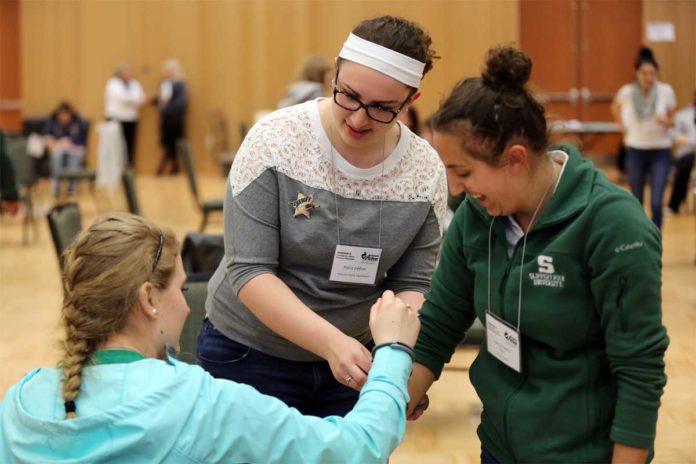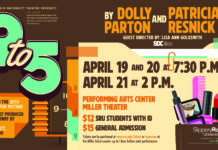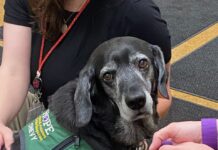SRU’s Student Nonprofit Alliance (SNA) demonstrated how impoverished people struggle to survive by hosting a poverty simulation Tuesday in the Smith Student Center Ballroom.
SNA paired with Butler’s Center for Community Resources (CCR) and Butler County Community Action to hold the simulation, which lasted an hour. The hour represented a month in the life of an impoverished person, each week totaling 15 minutes.
Each of the 85 participants who registered for the simulation were given a person to role-play, and a detailed profile about that person. The participants then were instructed to live as this person for the duration of the simulation, which included going to work or school, and paying for things like groceries and child care services.
Monica O’Donnell from CCR instructed participants during the simulation, and said that the goal of the simulation is to make participants see what it’s like to live in someone else’s shoes.
“There’s a big misconception that people who live in poverty are lazy,” O’Donnell said. “The background character information everyone’s given helps to personalize people who live in poverty, and the difficulties they face.”
O’Donnell said that she’s also done simulations with churches and county officials, and that it’s a good way to get people to take action on a prevalent issue.
Sophomore athletic training major, Ian Johnson, 20, played Glen Guten in the simulation, who was a 25-year-old with a child living on $6.50 per hour. He was arrested several times throughout the simulation, and said that he didn’t expect it’d be so difficult to keep up.
“I grew up in a middle class neighborhood outside of Harrisburg,” Johnson said. “I don’t deal with poverty first-hand, but this simulation helped me to gain empathy for other people.”
During the simulation, people could earn additional money by not only working, but also by selling their possessions at the pawnshop, or even selling drugs, which were represented by sugar packets. Many participants throughout the simulation were arrested for possessing or selling drugs, which put them even further behind the others, which senior nonprofit leadership major, Ann Tager, 22 said was representative of real life.
“It’s a vicious cycle,” she said. “Many participants were given profiles for drug addicts, and started out with the drugs and can’t get rid of them. It’s intentionally frustrating to the participants, so that they can get a sense of what that kind of life is like.”
She also said that the cycle of poverty is perpetuated by society, and how people who live in poverty don’t have a way out.
“You have people who work just as hard, if not harder, than everyone else and are still struggling to survive,” Tager said. “The system just isn’t made for them.”
Volunteer, sophomore recreational therapy and non-profit organization major, Erin Eaton, 20, said that educating the community about poverty is essential to raising awareness.
“Poverty is out there, and it affects many people” Eaton said, “but a lot of people aren’t educated about it, or aware that there are resources for people who need help.”









[…] "SRU’s Student Nonprofit Alliance (SNA) demonstrated how impoverished people struggle to survive by hosting a poverty simulation". […]